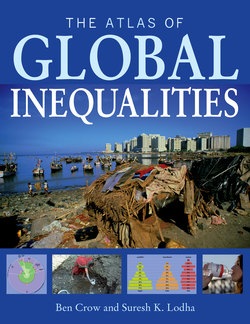Читать книгу The Atlas of Global Inequalities - Ben Crow - Страница 19
На сайте Литреса книга снята с продажи.
Оглавлениеto provide for family members. While some assets, like livestock, may be vulnerable in a natural disaster, others, like land, may enable households to generate money for their survival. Most households in the world own very little. A household with more than $2,100 is in the top half of the global distribution. China dominates the fourth to eighth deciles in the global wealth distribution because the ownership of land, housing and other goods is more equal, partly as a result of socialist land reforms, than in other areas such as South Asia. Improvements in the quality and collection of wealth-related data is badly needed for further studies, especially in those countries in Africa, Asia, and South America where household balance sheets were not available for the 2000 survey.
Household wealth is unevenly distributed across the world. A huge proportion is concentrated in the hands of a very few.
The bar chart below displays the distribution of wealth across the world. Each group of bars represents a tenth (a decile) of the world’s adult population (370 million), from the poorest decile on the left, to the wealthiest decile on the right. The colors indicate in which regions of the world people in different wealth deciles live. Latin America has a fairly equal number of adults in each wealth decile, indicating that wealth is quite evenly distributed. The bars for Africa vary more in height, indicating unequally distributed wealth, with the majority of people in the poorest deciles. The bars for North America also range widely in height, but the majority of people are in the richest deciles. The single bar on the right, represents the wealthiest 370 million adults in the world, and is divided up to indicate which countries they inhabit.
19
Copyright © Myriad Editions
